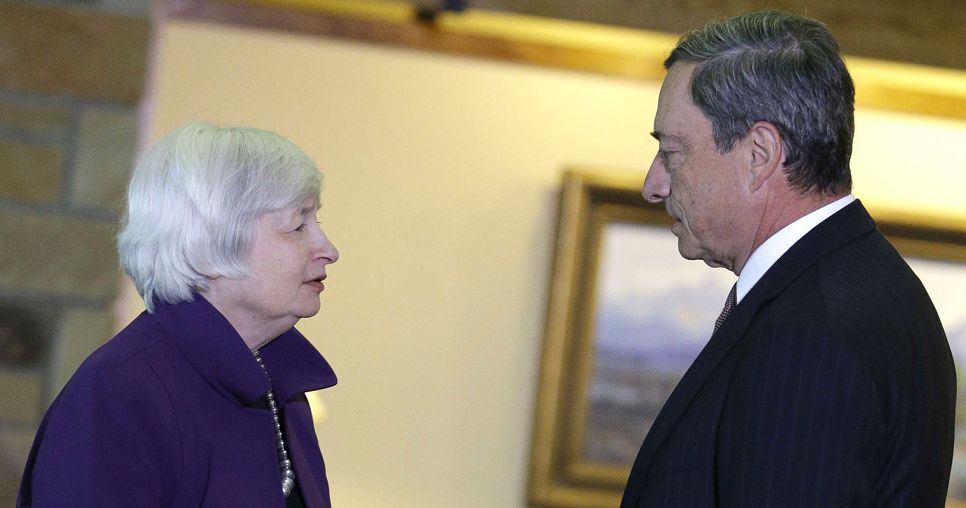The COVID-19 pandemic continues to weigh heavily on economic activity and labor markets in the United States and around the world, even as the ongoing vaccination campaigns offer hope for a return to more normal conditions later this year. While unprecedented fiscal and monetary stimulus and a relaxation of rigorous social-distancing restrictions supported a rapid rebound in the U.S. labor market last summer, the pace of gains has slowed and employment remains well below pre-pandemic levels. In addition, weak aggregate demand and low oil prices have held down consumer price inflation. In this challenging environment, the Federal Open Market Committee (FOMC) has held its policy rate near zero and has continued to purchase Treasury securities and agency mortgage-backed securities to support the economic recovery. These measures, along with the Committee’s strong guidance on interest rates and the balance sheet, will ensure that monetary policy will continue to deliver powerful support to the economy until the recovery is complete.
Economic activity and the labor market. The initial wave of COVID-19 infections led to a historic contraction in economic activity as a result of both mandatory restrictions and voluntary changes in behavior by households and businesses. The level of gross domestic product (GDP) fell a cumulative 10 percent over the first half of 2020, and the measured unemployment rate spiked to a post–World War II high of 14.8 percent in April. As mandatory restrictions were subsequently relaxed and households and firms adapted to pandemic conditions, many sectors of the economy recovered rapidly and unemployment fell back. Momentum slowed substantially in the late fall and early winter, however, as spending on many services contracted again amid a worsening of the pandemic. All told, GDP is currently estimated to have declined 2.5 percent over the four quarters of last year and payroll employment in January was almost 10 million jobs below pre-pandemic levels, while the unemployment rate remained elevated at 6.3 percent and the labor force participation rate was severely depressed. Job losses have been most severe and unemployment remains particularly elevated among Hispanics, African Americans, and other minority groups as well as those who hold lower-wage jobs.
Inflation. After declining sharply as the pandemic struck, consumer price inflation rebounded along with economic activity, but inflation remains below pre-COVID levels and the FOMC’s longer-run objective of 2 percent. The 12-month measure of personal consumption expenditures inflation was 1.3 percent in December, while the measure that excludes food and energy items—socalled core inflation, which is typically less volatile than total inflation—was 1.5 percent . Both total and core inflation were held down in part by prices for services adversely affected by the pandemic, and indicators of longer-run inflation expectations are now at similar levels to those seen in recent years.
Financial conditions. Financial conditions have improved notably since the spring of last year and remain generally accommodative. Low interest rates, the Federal Reserve’s asset purchases, the establishment of emergency lending facilities, and other extraordinary actions, together with fiscal policy, continued to support the flow of credit in the economy and smooth market functioning. The nominal Treasury yield curve steepened and equity prices continued to increase steadily in the second half of last year as concerns over the resurgence in COVID-19 cases appeared to have been outweighed by positive news about vaccine prospects and expectations of further fiscal support. Spreads of yields on corporate bonds over those on comparable-maturity Treasury securities narrowed significantly, partly because the credit quality of firms improved and market functioning remained stable. Mortgage rates for households remain near historical lows. However, financing conditions remain relatively tight for households with low credit scores and for small businesses. Financial stability. While some financial vulnerabilities have increased since the start of the pandemic, the institutions at the core of the financial system remain resilient. Asset valuation pressures have returned to or exceeded pre-pandemic levels in most markets, including in equity, corporate bond, and residential real estate markets. Although government programs have supported business and household incomes, some businesses and households have become more vulnerable to shocks, as earnings have fallen and borrowing has risen. Strong capital positions before the pandemic helped banks absorb large losses related to the pandemic. Financial institutions, however, may experience additional losses as a result of rising defaults in the coming years, and long-standing vulnerabilities at money market mutual funds and open-end investment funds remain unaddressed. Although some facilities established by the Federal Reserve in the wake of the pandemic have expired, those remaining continue to serve as important backstops against further stress.
International developments. Mirroring the United States, economic activity abroad bounced back last summer after the spread of the virus moderated and restrictions eased. Subsequent infections and renewed restrictions have again depressed economic activity, however. Relative to the spring, the current slowdown in economic activity has been less dramatic. Fiscal and monetary policies continue to be supportive, and people have adapted to containment measures that have often been less stringent than earlier. Despite the resurgence of the pandemic in many economies, financial markets abroad have recovered since the spring, buoyed by continued strong fiscal and monetary policy support and the start of vaccination campaigns in many countries. With the abatement of financial stress, the broad dollar has depreciated, more than reversing its appreciation at the onset of the pandemic. On balance, global equity prices have recovered and sovereign credit spreads in emerging market economies and in the European periphery have narrowed. In major advanced economies, sovereign yields remained near historical low levels amid continued monetary policy accommodation.


COMMENTS